Research on Spiral Tunnel Exit Speed Prediction Model Based on Driver Characteristics
Abstract
1. Introduction
2. Real Car Driving Experiment
2.1. Experimental Conditions
2.2. Experimental Procedure
3. Speed Prediction Modeling and Analysis
3.1. Selection of Data Indicators
3.1.1. Speed Distribution
3.1.2. Illumination Change
3.1.3. Driver Pupil Changes
3.2. Speed Prediction Model
3.2.1. NARX Model
3.2.2. Model Process and Results
4. Traffic Safety Risk Evaluation
4.1. Driving Sight Distance Calculation
4.2. Driving Load
4.3. Follow Time Distance
4.4. K-Means-Based Clustering Analysis of Driving Behavior
4.4.1. Clustering Analysis of Driving Behavior
4.4.2. Driving Behavior Expectations
4.5. Tunnel Exit Phase Predicted Speed Analysis
4.6. Tunnel Exit Phase Speed Control Measures
5. Conclusions
- (1)
- The driver is influenced by the exit environment. Under extreme concentration, the driving load fluctuates noticeably. According to an analysis of the tunnel exit section’s driver characteristics and environmental features, the vehicle’s speed decreased continuously during both the uphill and downhill spiral phases in the tunnel exit section. Due to the effect of road alignment, the uphill spiral speed decreased more gradually than the downhill spiral speed. As the illumination of the tunnel’s exit section fluctuated drastically, causing the drivers’ pupils to contract rapidly, the drivers’ field of vision constantly decreased. The drivers slowed down during vehicle braking, and load fluctuations caused changes in the environment. The substantial influence of ecological illumination on the drivers during the tunnel exit phase has a negative effect on traffic safety [25].
- (2)
- During the tunnel’s exit phase, the drivers’ driving behavior and driving expectations changed significantly. During the tunnel exit phase, the reduced visual range and fluctuating driving load significantly altered the drivers’ behavior. The closer a driver was to the exit, the more aggressive their driving behavior became. Taking into account behavioral factors in driving expectations revealed a downward trend in driving expectations. 75 m before tunnel exit, the expected speed was as low as 18.98 km/h. This demonstrates that effective control of the drivers’ speed during the tunnel’s exit phase had a significant impact on traffic safety during the tunnel’s exit phase.
- (3)
- Setting dynamic safety and comfort speeds to keep drivers comfortable during the tunnel exit phase can effectively reduce tunnel exit traffic risk. Taking into account significant differences in the environmental impact and substantial changes in driver characteristics during the tunnel exit phase, setting variable speed limits within the safe driving speed tolerance range and decreasing speed dispersion is advantageous to the safe operation of tunnel exit phase traffic.
6. Discussions and Perspectives
Author Contributions
Funding
Institutional Review Board Statement
Informed Consent Statement
Data Availability Statement
Conflicts of Interest
References
- Aarts, L.; Schagen, I.V. Driving speed and the risk of road crashes: A review. Accid. Anal. Prev. 2006, 38, 215–224. [Google Scholar] [CrossRef]
- Avijit, M.; Tyagi, A. Speed prediction models for car and sports utility vehicle at locations along four-lane median divided horizontal curves. J. Mod. Transp. 2018, 26, 278–284. [Google Scholar] [CrossRef]
- Bassani, M.; Catani, L.; Salussolia, A. A Driving Simulation Study to Examine the Impact of Available Sight Distance on Driver Behavior Along Rural Highways. Accid. Anal. Prev. 2019, 131, 200–212. [Google Scholar] [CrossRef] [PubMed]
- Cooper, J.M.; Medeirosward, N.; Strayer, D.L. The impact of eye movements and cognitive workload on lateral position variability in driving. Hum. Factors J. Hum. Factors Ergon. Soc. 2013, 55, 1001–1014. [Google Scholar] [CrossRef] [PubMed]
- Cai, X.; Lei, C.; Peng, B. Road Traffic Safety Risk Estimation Based in Driving Behavior and Information Entropy. China J. Highw. Transp. 2020, 33, 190–201. [Google Scholar] [CrossRef]
- Chen, Z.; Wang, X.; Zhang, X. Modeling of Driver Acceleretion and Deceleration Behavior in Mountain Freeways. China J. Highw. Transp. 2020, 33, 167–175. [Google Scholar] [CrossRef]
- Du, Z.; Pan, X.; Yang, Z. Research on Visual Turbulence and Driving Safety of Freeway Tunnel Entrance and Exit. China J. Highw. Transp. 2007, 20, 101–105. [Google Scholar] [CrossRef]
- Du, Z.; Pan, X.; Guo, X. Evaluation Index’s Application Studies on Safety at Highway Tunnel’s Entrance and Exit. J. Tongji Univ. Nat. Sci. 2008, 3, 325–329. [Google Scholar]
- Figueroa, A.M. Subjective and Objective Risks Consideration in Modeling Highway Safety; Purdue University: West Lafayette, IN, USA, 2005. [Google Scholar]
- Guo, K. Car Manoeuvring Dynamics; Jilin Science and Technology Press: Changchun, China, 1991. [Google Scholar]
- Guo, Z.; Dai, Y.; Zhou, X. Critical Safety Speed and Its Application Research on Risk Characteristic Section of Expressway Tunnel (Tunnel Group). China J. Highw. Transp. 2010, 23, 116–122. [Google Scholar] [CrossRef]
- Guo, Q.; Wang, X.; Chen, Z. Modeling Operation Speed in Mountainous Freeways: A Driving Simulator Study. J. Tongji Univ. Nat. Sci. 2019, 47, 1004–1010. [Google Scholar]
- Huang, J.; Ji, Z.; Peng, X. Driving Style Adaptive Lane-changing Trajectory Planning and Control. China J. Highw. Transp. 2019, 32, 226–239+247. [Google Scholar] [CrossRef]
- Lamm, R. Possible design procedure to promote design consistency in highway geometric design on two lane rural roads. Transp. Res. Rec. 1998, 1195, 111–122. [Google Scholar] [CrossRef]
- Reyes, M.L.; Lee, J.D. Effects of Cognitive Load Presence and Duration on Driver Eye Movements and Event Detection Performance. Transp. Res. Part F: Traffic Psychol. Behav. 2008, 11, 391–402. [Google Scholar] [CrossRef]
- Shang, R.; Zhang, S. A Study on Tunnel Traffic Security System of Expressway. Highway 2006, 12, 127–130. [Google Scholar]
- Wang, Q. Variable Speed Limit Control for Long Freeway Tunnel Entrances and Exits. Master’s Thesis, Chang’an University, Xi’an, China, 2015. [Google Scholar]
- Wang, X.; Chen, Z.; Guo, Q. Transferability Analysis of the Freeway Continuous Speed Model. Accid. Anal. Prev. 2021, 151, 105944. [Google Scholar] [CrossRef] [PubMed]
- Xu, J.; Sun, Z.; Long, Y. Study on car following characteristics of minibus across River Bridge Based on natural driving data. China J. Highw. Transp. 2021, 34, 1–13. [Google Scholar] [CrossRef]
- Yang, Y. Study on the Minimum Following Distances of Vehicles on Freeway. Master’s Thesis, Chang’an University, Xi’an, China, 2016. [Google Scholar]
- Yang, Y.; Chen, Y.; Wu, C. Effect of Highway Directional Signs on Driver Mental Workload and Behavior Using Eye Movement and Brain Wave. Accid. Anal. Prev. 2020, 146, 105705. [Google Scholar] [CrossRef]
- Yuan, Q.; Yan, N.; Hao, W. Research on pedestrian risk assessment and early warning algorithm based on psychological safety distance. China J. Highw. Transp. 2021, 34, 1–14. [Google Scholar] [CrossRef]
- Zhu, T.; Wu, L.; Hu, Y. Research on Characteristics of Drivers’ Mental Workload in Extra-long Expressway Tunnels Based on the Factor Model. China J. Highw. Transp. 2018, 31, 165–175. [Google Scholar]
- Zhao, X.; Ju, Y.; Li, J. Evaluetion of the Effect of PRMs in Extra-long Tunnels Based in Driving Behavior and Visual Characteristics. China J. Highw. Transp. 2020, 33, 29–41. [Google Scholar] [CrossRef]
- Zheng, L.; Qiao, X.; Ni, T. Car-following Behavior of Passenger Cars on River Crossing Bridge Based on Naturalistic Driving Data. China J. Highw. Transp. 2021, 34, 240–250. [Google Scholar] [CrossRef]
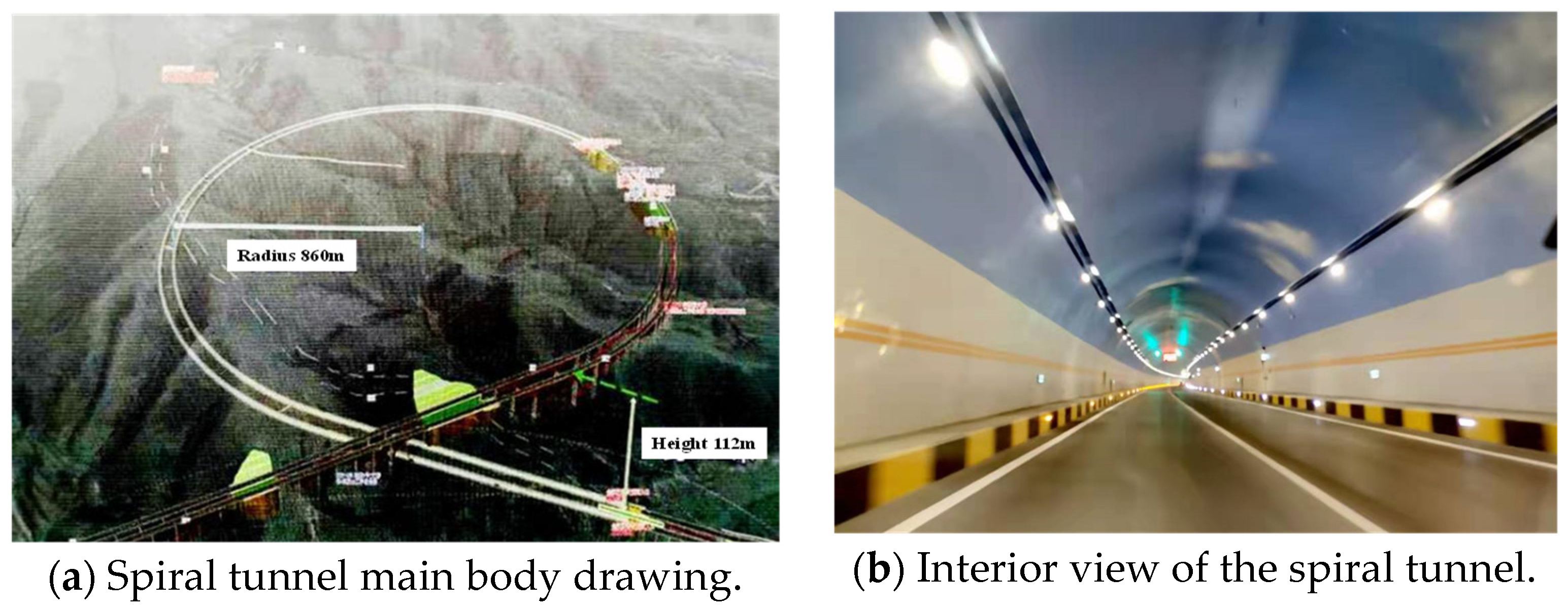
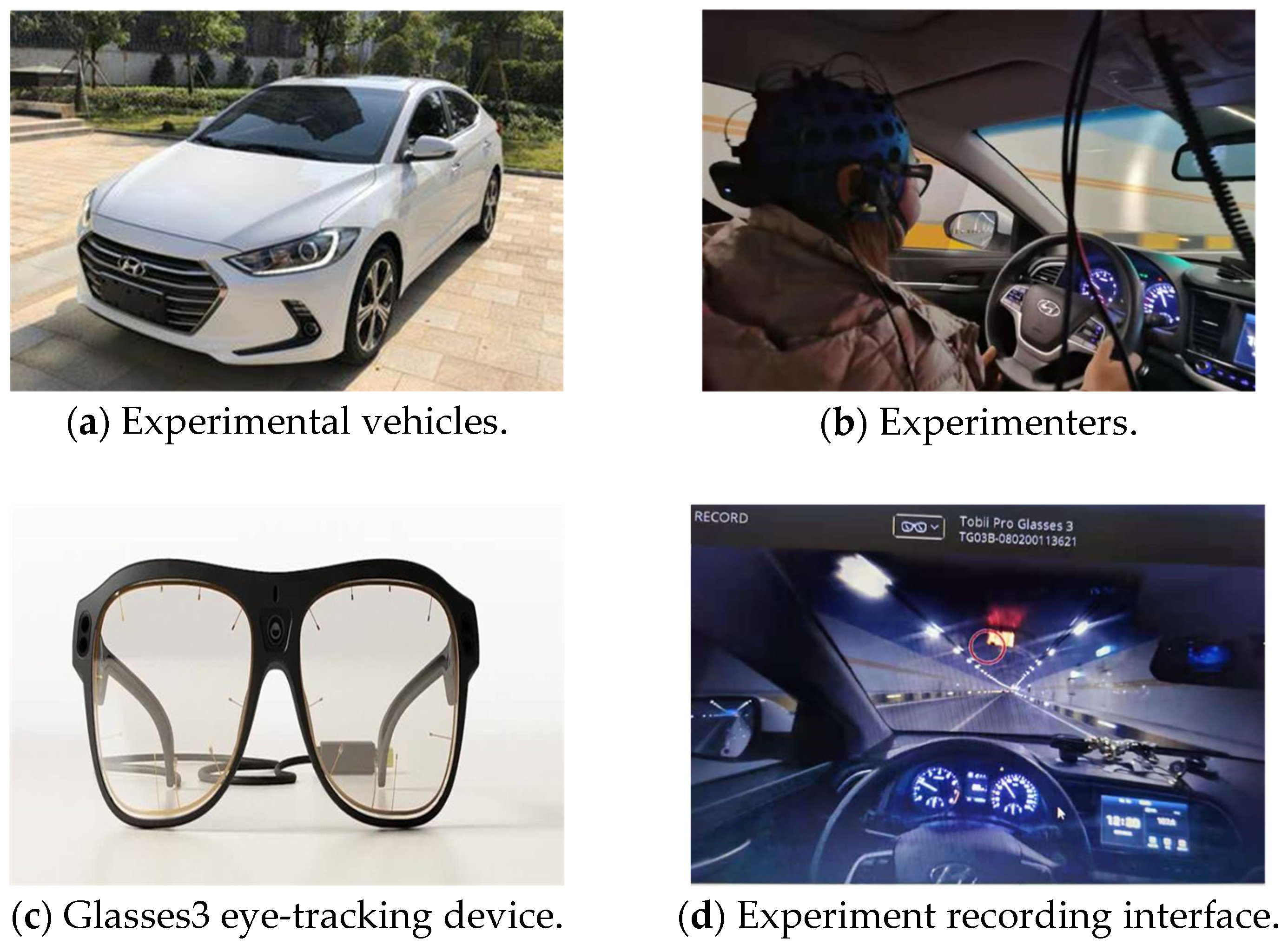
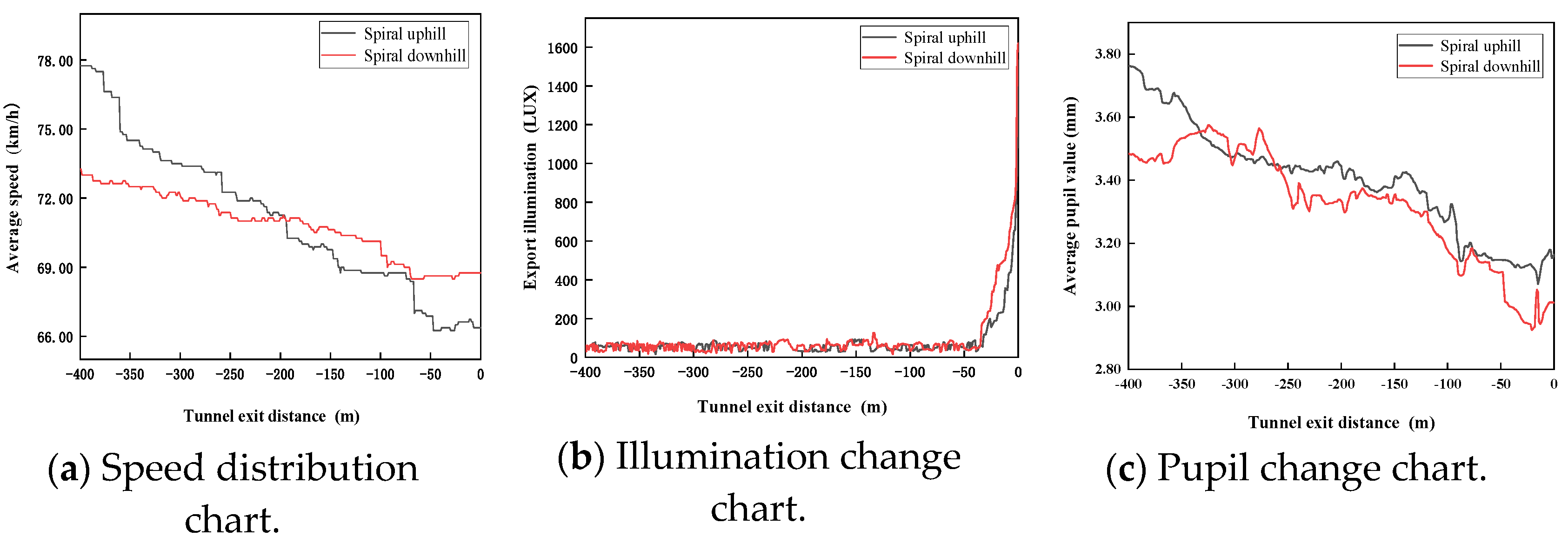

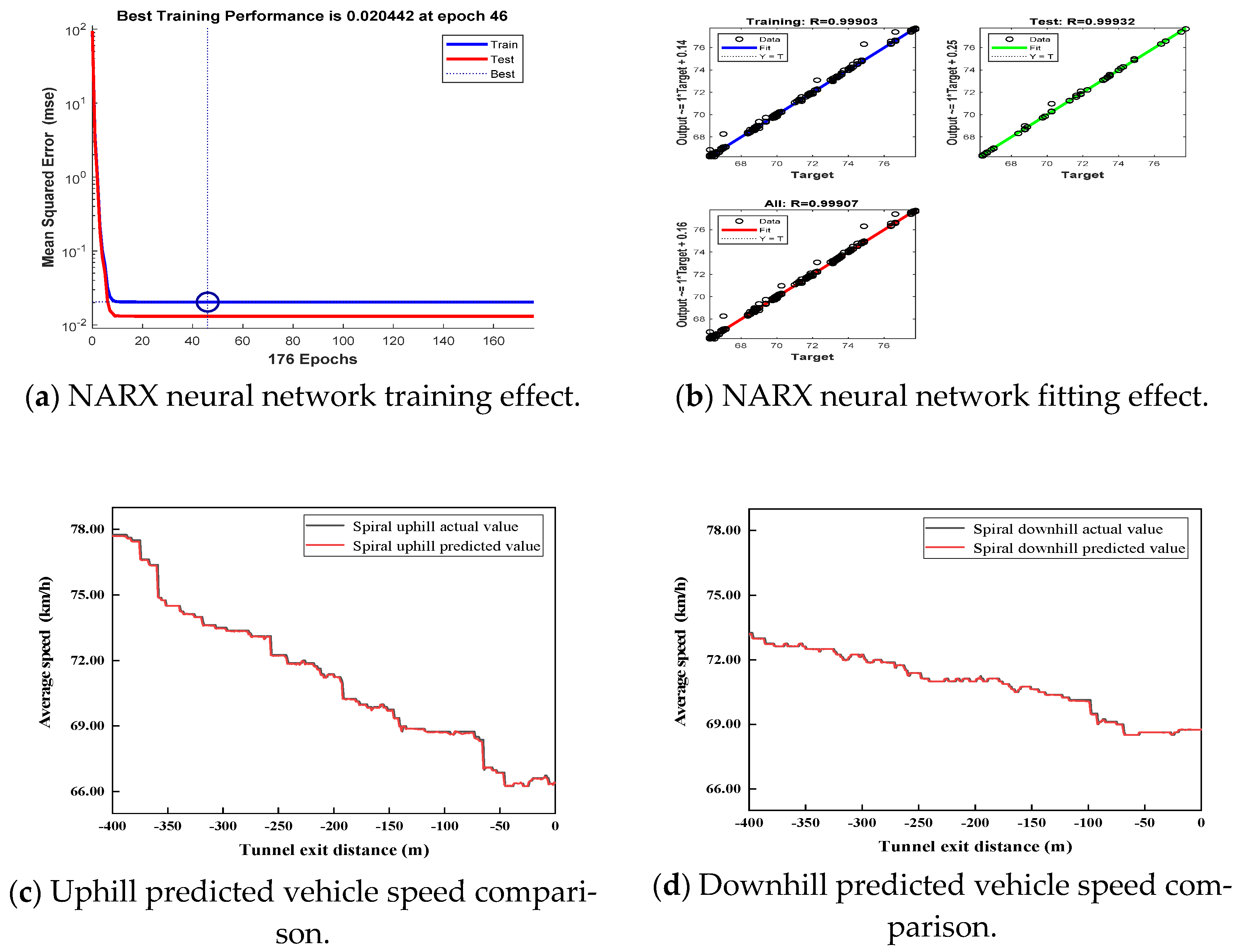
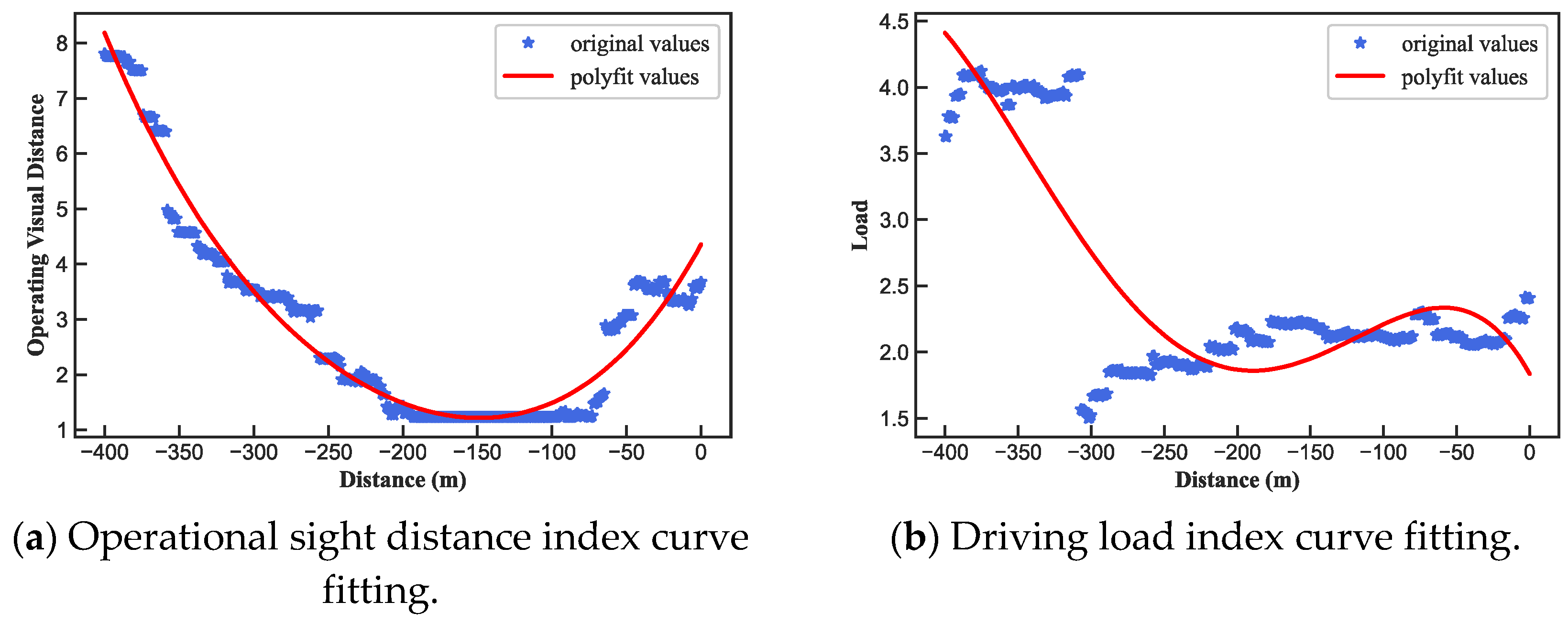

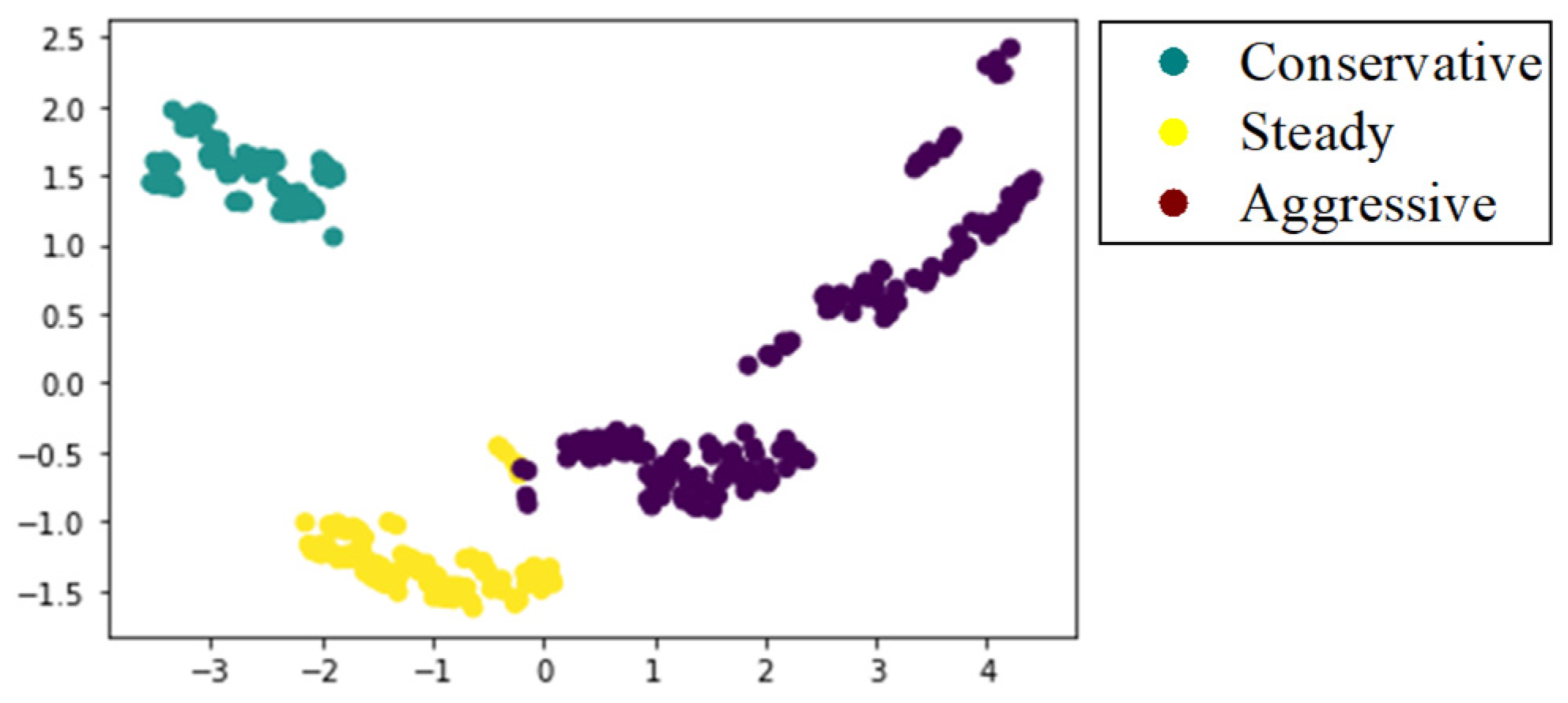

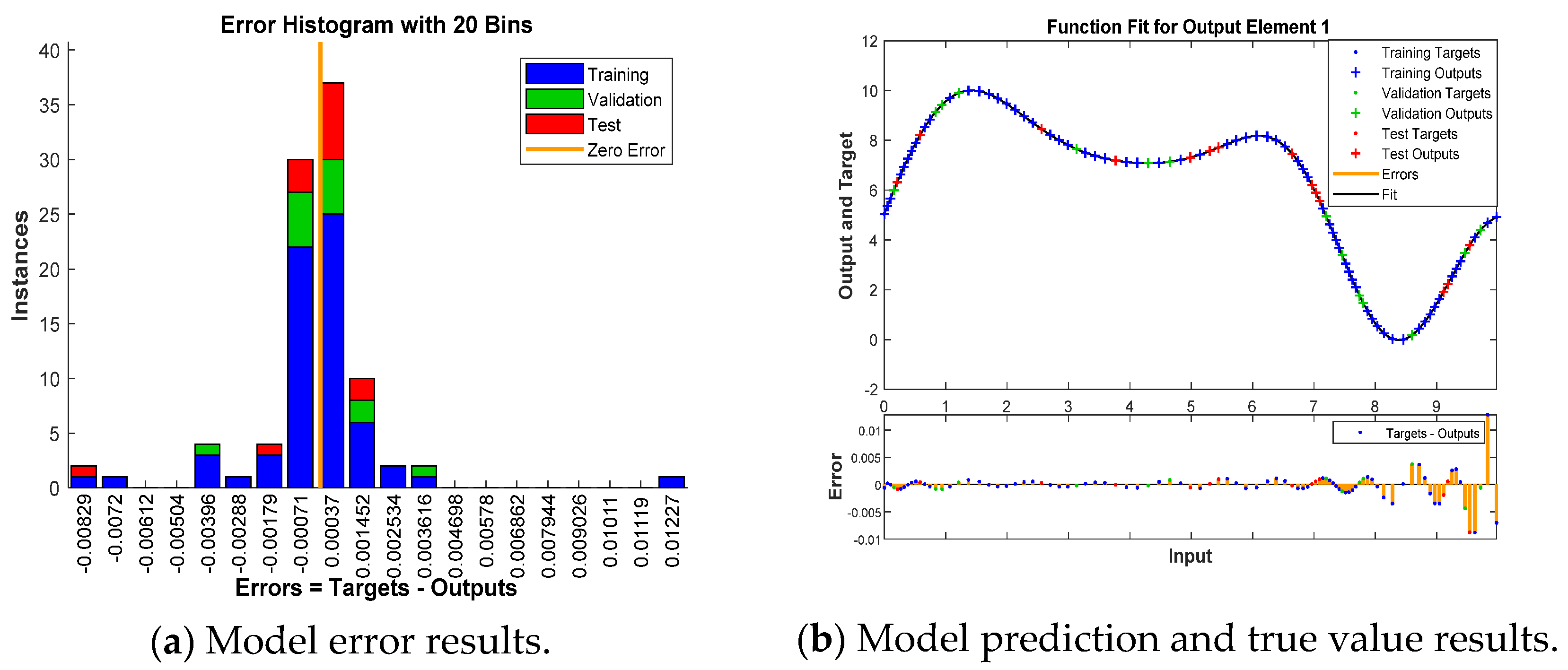
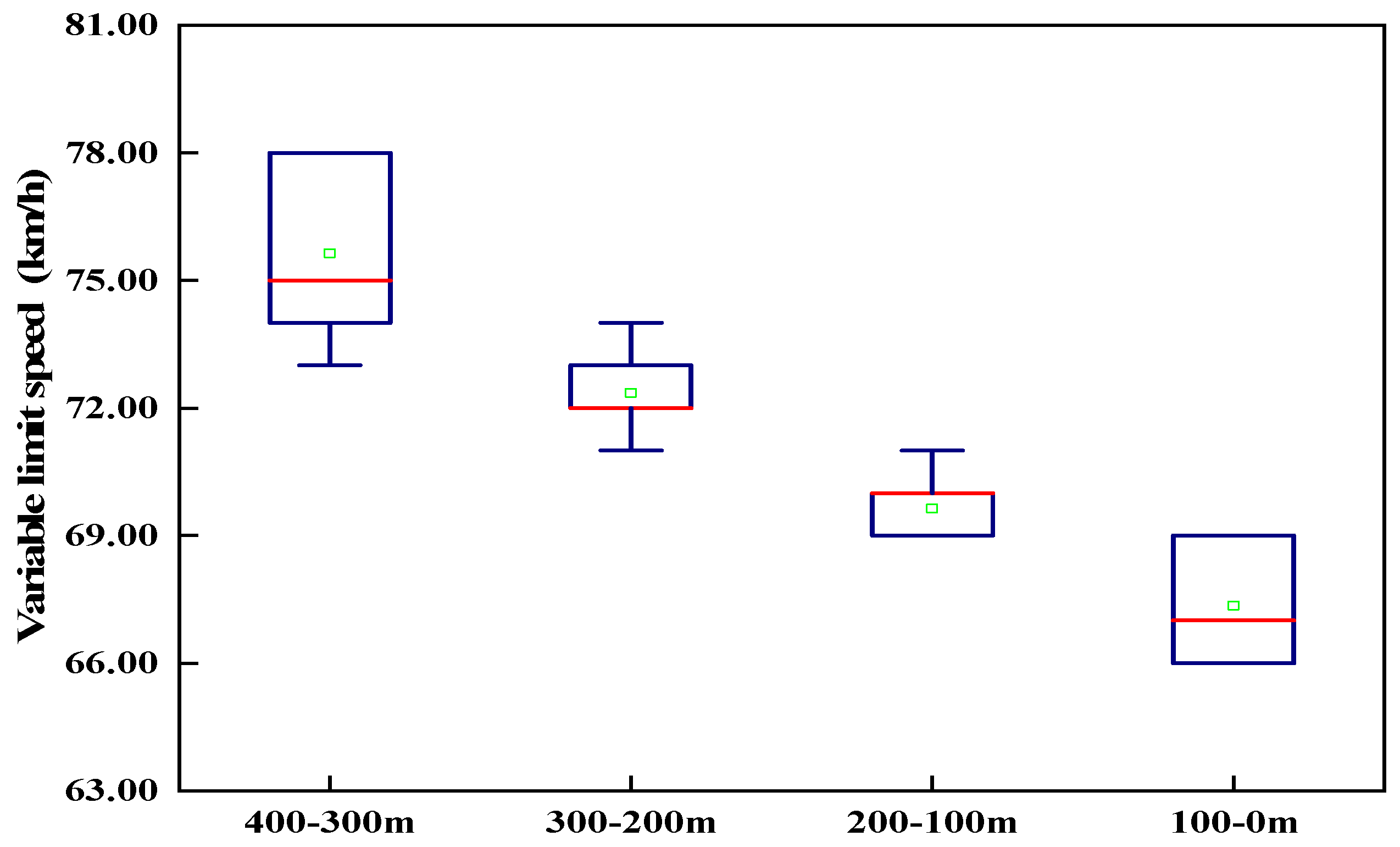
| Vehicle Speed (km/h) | Critical Safety Distance (m) | Early Warning Safety Distance (m) |
|---|---|---|
| 100.2157 | 63.713 | 163.929 |
| 80 | 41.086 | 121.086 |
| 73 | 34.404 | 107.404 |
| 68 | 29.996 | 97.996 |
Publisher’s Note: MDPI stays neutral with regard to jurisdictional claims in published maps and institutional affiliations. |
© 2022 by the authors. Licensee MDPI, Basel, Switzerland. This article is an open access article distributed under the terms and conditions of the Creative Commons Attribution (CC BY) license (https://creativecommons.org/licenses/by/4.0/).
Share and Cite
Xu, X.; Kang, X.; Wang, X.; Zhao, S.; Si, C. Research on Spiral Tunnel Exit Speed Prediction Model Based on Driver Characteristics. Sustainability 2022, 14, 15736. https://doi.org/10.3390/su142315736
Xu X, Kang X, Wang X, Zhao S, Si C. Research on Spiral Tunnel Exit Speed Prediction Model Based on Driver Characteristics. Sustainability. 2022; 14(23):15736. https://doi.org/10.3390/su142315736
Chicago/Turabian StyleXu, Xiaoling, Xuejian Kang, Xiaoping Wang, Shuai Zhao, and Chundi Si. 2022. "Research on Spiral Tunnel Exit Speed Prediction Model Based on Driver Characteristics" Sustainability 14, no. 23: 15736. https://doi.org/10.3390/su142315736
APA StyleXu, X., Kang, X., Wang, X., Zhao, S., & Si, C. (2022). Research on Spiral Tunnel Exit Speed Prediction Model Based on Driver Characteristics. Sustainability, 14(23), 15736. https://doi.org/10.3390/su142315736






